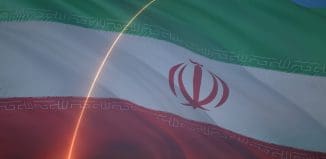Stuxnet Is Only The Tip Of The Iceberg
This post is also available in:  עברית (Hebrew)
עברית (Hebrew)
Stuxnet, the world-famous computer worm that destroyed Iran’s centrifuges at the Natanz uranium enrichment plant, was only one part of a much larger operation. Nitro Zeus, as the plan was known internally, was to target Iran’s communications systems, key parts of the power grid, and air defences if talk between the Islamic Republic and the West failed to reach a peaceable resolution and the United States had to engage in a war between Israel and Iran.
Thousands of US intelligence and military personnel were involved in planning Nitro Zeus, and tens of millions of dollar were invested in successfully inserting surveillance and sabotage measures into Iran’s infrastructure. The Fordo nuclear enrichment site, long considered the most impenetrable of Iran’s nuclear facilities, was also targeted as part of the plan.
Nitro Zeus was brought to attention by the documentary Zero Days, which explores the atmosphere of the growing conflict between Iran and the West, as well as the tense collaborative efforts of Israel and the US to stop Iran’s programme. The movie, first shown at the Berlin Film Festival on Wednesday, was directed by Alex Gibney.
To uncover the covert operation, Gibney’s research team interviewed current and former members of the programme. They revealed details of the the efforts to sabotage Iran’s computer networks in preparation for a potential order to disable them.
This programme was a real trial by fire for the fledgling United States Cyber Command, which is still in the process of forming its cyber special forces and deploying them around the globe. “This was an enormous, and enormously complex, program,” one participant who requested anonymity told the New York Times. “Before it was developed, the US had never assembled a combined cyber and kinetic attack plan on this scale.”




























